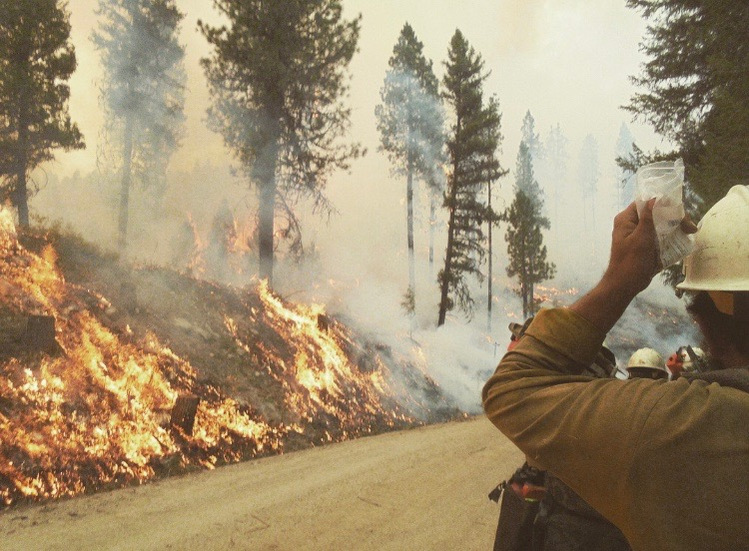
To some degree, every government commission or review that has studied the causes of a mega-fire has recommended the formation of greater “integrated fire management” (IFM). Recommendations often identify needs to boost mitigation and prevention through year-round wildfire efforts. These actions extend beyond simply responding to problematic fires, but rather recognizing the risks and benefits of fire to develop integrated strategies that incorporate their "good" and "bad" qualities. Integrated fire management, in a sense, combines the ecological imperative for fire and the social need to mediate its impacts - it is a concept to achieve the ecological and societal balance of wildfires.

“The meaning of Integrated Fire Management [in this paper] is the integration of science and society with fire management technologies at multiple levels. It implies a holistic or seamlessly-woven comprehensive approach to address fire issues that considers biological, environmental, cultural, social, economic and political interactions” (Myers 2006)
(Diagram - PyroLife 2019)

The path to achieving integrated fire management is a murky one and is based upon adaptive management - an approach that embraces uncertainty so that strategies may be changed easily when goals are not being reached. The present strategies to promote IFM is to:
develop strong analysis of ecological fire regimes and fire-related issues,
implement appropriate fire policy,
improve fire use methods (prescribed fire, cultural burning, and managed wildfire),
strengthen or maintain suppression capabilities,
enact post-fire recovery and restoration for both social and ecosystem needs.
In this photo: an map of Spain's ecosystems and forests can be observed next to rounds of its various Quercus species. Wildfire management planning is dependent on recognition of eco-zones and their respective fire regimes.

The realization of these strategies means that wildfire issues will have to expand beyond firehouses and government agencies. To actually achieve proactive goals, preventive wildfire measures will have to percolate into legislation, regulation of economic activities, urban planning, frameworks for ecological burning, community projects, recognized indigenous cultural burning rights, and other disciplines.
In this photo: An EU-funded project, HEIMDALL, has been developed to help map out at-risk areas and infrastructures for flooding and fires. These types of tools are imperative for town planning and emergency management.

Damaging wildfires are largely a result of human interactions with their immediate environments, and mitigating those damages may best be suited by addressing the impacts of those interactions. The permeation of wildfire management, beyond suppression agencies, to many other aspects of society is key to altering narratives surrounding wildfires so that integrated fire management can occur.

In 2017, Portugal experienced one of its most devastating wildfire seasons. In two significant events, in June and October, a cumulative 109 people lost their lives and other livelihoods decimated. On October 15th alone, 443 wildfires occurred, of which 99% were human caused. For Portugal, this loss radiated heavily throughout the small nation, and out of tragedy, new attitudes emerged.

The outcome was the creation of the Agency for Integrated Management of Rural Fire (AGIF), a body specifically orientated towards coordinating Portugal’s numerous response agencies, forestry actions, and public engagement. Under the direct oversight of the President, AGIF set forward a national plan to enhance wildfire mitigation, risk governance, and risk ownership, largely by calling on new organizations to get involved in the issue.

For example, AGIF engaged with: the Ministry of Justice to navigate confusion regarding land ownership in high-risk areas; the Ministry of Economics to develop plans for rural development and land-use, the Ministry of Education to better align awareness campaigns, and the Ministry of Defense to implement greater civil protection. AGIF has expanded to the international level through exchange programs so that organizations may learn new tactics - one example included consultations from Chilean firefighters who helped develop operational leadership within response agencies. Conversely, AGIF has unfolded down to the local level as officers directly work with local universities and communities to brainstorm planning, research, and prescribed burns.

AGIF is pursuing integrated fire management by collaborating with various agencies, ministries, and stakeholders to develop mindset about wildfires so that it becomes a reference for all activities. Coordination is the agencies strength. Just as the U.S's NIFC and Canada's CIFFC coordinate operational resources, AGIF is coordinating operational and mitigative efforts.

As wildfires continue to press the abilities of other nation's, they too may be find themselves forced to make a similar decision of Portugal - a rethinking of wildfire governance and the role of wildfire management agencies. For many, these points may have already occurred. The successes and challenges of AGIF will reflect the barriers and enhancers of IFM. Does IFM have the potential to alter the trajectory of a mega-fire reality? Time will tell, but it may offer the best framework possible for a future of fire.
(Photo - Amanda Monthei, 2017)


